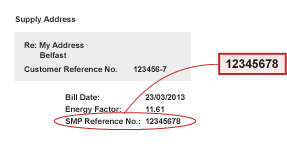The October 2015 firmus Energy Index rose by 2%
Month-on-month due to stronger wholesale electricity prices. Refreshingly, oil prices now appear to be at the mercy of market forces, rather than the whims of a profit seeking cartel. This is seen as healthy and reflects a significant departure from the past when OPEC, tensions with Iran, the Arab Spring and Islamic State kept prices in a range of between US$100 – US$110 in the years from 2IN011 and 2014 despite booming US production. Rightly, prices now reflect the current supply glut. In October 2015 the Index stood at 73, which is a one point jump from the record low of 72 points in September 2015.

HOT TOPIC
- The recent peak in oil prices (and other commodity prices) has led to a hugely expanded global natural gas reserve in recent years
- Added to the much reported global oil supply glut, is now an associated natural gas glut
- According to Eclipse Energy, a unit of Platts, as a result of this expanded reserve, UK wholesale gas prices will be lower than where they are currently priced
- Indeed, Eclipse forecast that UK wholesale prices could fall to a level at parity with the US wholesale prices which has fallen dramatically in recent years due to growth in supplies as a result of the shale gas revolution
Why have global gas supplies expanded?
Peak oil theory reached fever pitch in 2008 and extended not just to oil but coal and even food. Record high global commodity prices naturally broadened the exploitable gas reserve base. New gas has been sourced (and will be sourced) from various supplies such as caolseam gas (CSG), floating LNG and shale gas CSG is a type of unconventional natural gas. It is made up primarily of methane gas (generally 95-97%) and is found in coal seams at depths of 300m-1000m underground. The Santos-operated Gladstone LNG project which shipped its first cargo in October is a coalseam gas to LNG project. Australia is expected to
add 60 million tons per annum of new LNG capacity by end-2020.
Floating LNG (this is a water-based LNG operation employing technologies designed to enable the development of offshore natural gas resources) is expected to provide the means to monetise formerly stranded gas reserves too far from land to warrant a pipeline to shore method of development. The world’s first FLNG project – Malaysian state oil company Petronas’ Floating LNG 1 – is expected to start production in early 2016, and will be followed by Shell’s Prelude project offshore Australia in 2017.
All this comes on top of the development of shale gas in North America, which has increased US’ proved gas reserves from 6.7Tcm in 2007 to 9.8Tcm at end-2014. This has promoted the development of the emergent US LNG export industry, the first cargoes from which should hit the market in 2016. Investment in LNG production and transportation technologies have also been key factors in the expansion of gas supplies that has resulted in the current gas glut.
Want to read more? firmus energy business customers receive our full index report. Another benefit of switching your energy supply to firmus energy. Why not contact our Key Account Management team today.





